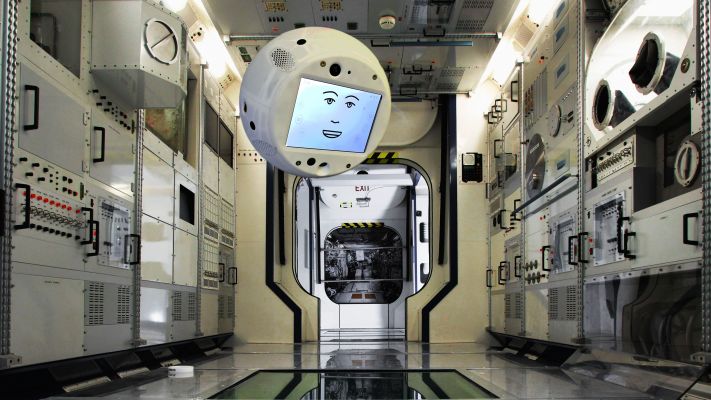
The Crew Interactive Mobile Companion (or CIMON, for short) recorded a number of firsts on its initial mission to the International Space Station, which took place last November, including becoming the first-ever autonomous free-floating robot to operate aboard the station, and the first-ever smart astronaut assistant. But CIMON is much more than an Alexa for space, and CIMON-2, which launched aboard today’s SpaceX ISS resupply mission, will demonstrate a number of ways the astronaut support robot can help those working in space — from both a practical and an emotional angle.
CIMON is the product of a collaboration between IBM, the German Aerospace Center (DLR) and Airbus, and its aim is to design and develop a robotic assistant for use in space that can serve a number of functions, including things as mundane as helping to retrieve information and keep track of tasks astronauts are doing on board the station, and as wild as potentially helping to alleviate or curb the effects of social issues that might arise from settings in which a small team works in close quarters over a long period.
“The goal of mission one was really to commission CIMON and to really understand if he can actually work with the astronauts — if there are experiments that he can support,” explained IBM’s Matthias Biniok, project manager on the Watson AI aspects of the mission. “So that was very successful — the astronauts really liked working with CIMON.”
“Now, we are looking at the next version: CIMON-2,” Biniok continued. “That has more capability. For example, it has better software and better hardware that has been improved based on the outcomes that we had with mission one — and we have also some new features. So for example, on the artificial intelligence side, we have something called emotional intelligence, based on our IBM Watson Tone Analyzer, with we’re trying to understand and analyze the emotions during a conversation between CIMON and the astronauts to see how they’re feeling — if they’re feeling joyful, if something makes them angry, and so on.”
That, Biniok says, could help evolve CIMON into a robotic countermeasure for something called “groupthink,” a phenomenon wherein a group of people who work closely together gradually have all their opinions migrate toward consensus or similarity. A CIMON with proper emotional intelligence could detect when this might be occurring, and react by either providing an objective, neutral view — or even potentially taking on a contrarian or “Devil’s advocate” perspective, Biniok says.
That’s a future aim, but in the near-term CIMON can have a lot of practical benefit simply by freeing up time spent on certain tasks by astronauts themselves.
“Time is super expensive on the International Space Station,” Biniok said. “And it’s very limited, so if we could save some crew time with planning, that would be super helpful to the astronauts. CIMON can also support experiments — imagine that you’re an astronaut up there, you have complex research experiments going on, and there’s a huge amount of documentation for that. And if you are missing some information, or you have a question about it, then you have to look up in this documentation, and that takes time. Instead of doing that, you could actually just ask CIMON — so for example, ‘what’s the next step CIMON?,’ or ‘why am I using Teflon and not any other materials?’ ”
CIMON can also act as a mobile documentarian, using its onboard video camera to record experiments and other activities on the Space Station. It’s able to do so autonomously, too, Biniok notes, so that an astronaut can theoretically ask it to navigate to a specific location, take a photo, then return and show that photo to the astronaut.
This time around, CIMON will be looking to stay on the ISS for a much longer span than version one; up to three years, in fact. Biniok had nothing specific to share on plans beyond that, but did say that long-term, the plan is absolutely to extend CIMON’s mission to include the Moon, Mars and beyond.
Science - Latest - Google News
December 06, 2019 at 01:33AM
https://ift.tt/2ORdWNo
AI-enabled assistant robot returning to the Space Station with improved emotional intelligence - TechCrunch
Science - Latest - Google News
https://ift.tt/2Kb7H4e
Shoes Man Tutorial
Pos News Update
Meme Update
Korean Entertainment News
Japan News Update
Bagikan Berita Ini














0 Response to "AI-enabled assistant robot returning to the Space Station with improved emotional intelligence - TechCrunch"
Post a Comment